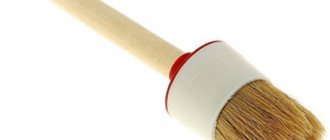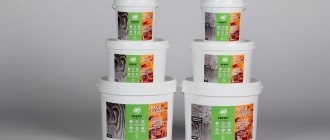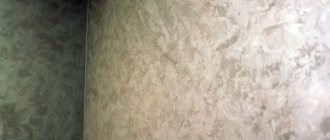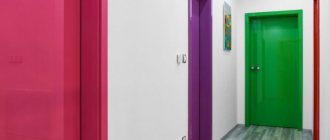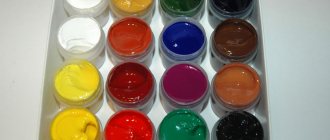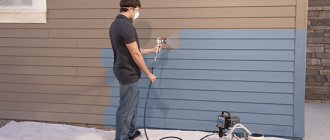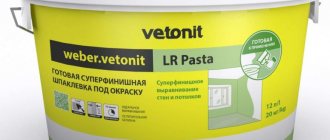This type of metal, such as stainless steel, is used to produce a large number of objects around us. Often the latter are unpainted, since they do not need protection from moisture, and at the same time they can effectively shine with their metal surface. So the coloring here is mainly due to individual design goals. Therefore, if you, say, want to paint corrugated stainless steel black, this means that this color is necessary as part of the interior design, and it is more preferable than the natural color of the metal.
Difficulties in painting stainless steel
Faced with the need to paint stainless steel, many understand the complexity of the process - with the standard approach, the paint simply does not adhere to this smooth surface, since the material lacks adhesion. However, this does not mean that it is impossible to paint this metal. You just need to choose the right paint and properly approach the surface preparation process. At the same time, for many it will be a discovery that copper, stainless steel, aluminum, and galvanized metal are also subject to corrosion, albeit to a much lesser extent. Therefore, they also need to be protected, and in some cases it is highly advisable to paint them.
Flawless metal painting for you!
Don’t want to take risks and immediately choose custom stainless steel painting? You make an informed and practical decision. Our metalworking shop is not only high-capacity, but also craftsmen who are ready to carry out the most complex assignments. The production is equipped with large furnaces for heat treatment of long workpieces. Our advantages:
- high responsibility, attentive attitude to any project;
- strict adherence to deadlines;
- providing a guarantee for work.
With us, your rental will gain not only a new “face,” but also protection that has virtually no equal. Contact us!
Preparing stainless steel for work
The quality of the final result directly depends on this stage, so it should be carried out as responsibly as possible. The process consists of several stages:
- We study the surface. The surface to be painted must be carefully examined for unevenness or defects. If they are not very large, then it is better to abandon the idea of leveling. The thing is that a perfectly smooth and polished steel surface adheres extremely poorly to paint, and the quality of its painting will be mediocre;
- We give the surface roughness. If the same wood is polished before painting, then with steel everything is different - we must make it matte and slightly rough to the touch. The easiest way to do this is to use a wire brush, but this treatment is only suitable for relatively small surfaces. If the area is large, then it is better to automate the process using a grinding attachment with an abrasive disk of medium grain size. This stage is especially important when processing a surface polished to a shine;
- Cleaning from dirt and dust. After the process of giving the surface a rough appearance, the latter must be cleaned of dust. A simple cloth soaked in water is ideal for this. Try to go over the entire surface, as there should be no loose fragments left on it. For the same reason, work should not be done in a dusty room;
- Degreasing. Grease stains, which may even be invisible to you, greatly reduce the adhesion of paint to the surface. Therefore, the latter must be treated with special acid- or alkaline-based compounds. A popular method is to use an ammonia composition. At the same time, we must not forget about protecting the respiratory tract with a respirator and ventilating the room. Finally, you can use a four percent solution of simple soda, available in every home.
Important! It is necessary to work on painting only after the surface is completely dry.
What is powder paint
Powder coatings are mixtures of solid particles, consisting of many components. The basis is a powder-type polymer and a coloring pigment. Depending on the area of application of the paint, the components of the composition are different. The main additives are:
- fillers (aluminum oxide, titanium dioxide);
- hardeners (for example, epoxy resin);
- resins that create a protective film on the treated surface;
- acrylates.
Stainless steel paint in powder form does not contain solvents, so it is not a flammable or toxic paint composition. If the technology for painting a polished stainless steel surface is followed, the harmful impact on the environment and humans tends to zero. The advantage of powder paint is its flowability that persists over time; paintwork components do not thicken or stick together. This property eliminates the need to dilute the paint before use. Flowability also determines the surface treatment technology - the coloring composition is sprayed onto stainless steel. The paint particles receive a charge, while the workpiece carries the opposite charge. Therefore, the powder sticks to the surface. Subsequently, the adhered particles are subjected to heat treatment in an oven (polymerization).
Powder paint
Powder coating
This method is by far the most effective, but it is difficult to apply in everyday life. Heat-resistant paint in powder form is applied to the surface using a spray gun, after which the painted part is placed in a chamber in which the temperature reaches 200 degrees Celsius. As a result, a very durable film appears on the surface, which is not only resistant to external influences, but can also be made in various design variations - from glossy or matte to imitation of various surfaces.
Important! For the same reason, we will not analyze the method of painting by creating an oxide film, which is clearly difficult to implement at home.
Painting process
In industrial conditions, before painting, the parts being processed are washed in chambers and dried in ovens; a conveyor process is organized there. At home, prepared stainless steel can be dried on a table or on a radiator. The powder is applied by spraying from a gun. The equipment is made in such a way that the paint particles receive one charge, and the part being painted receives the opposite charge. Under such conditions, the powder adheres to the stainless steel in an even layer. Industrial painting is completed quickly, but at home this process will take longer. The technology for applying paint on stainless steel in powder form involves electrostatic or turbostatic spraying. The first option involves an external charge source, the second method allows particles to be charged by rubbing them against the walls of the turbine. The second stage of painting is melting the paint in an oven at a temperature of 150-220 degrees. Powder particles melt at high temperatures and form a film on stainless steel, which subsequently hardens. Industrial polymerization chambers are designed for changing reflow conditions (sudden increase and decrease in temperature, inclusion of recirculation of air flows, etc.). Do-it-yourself ovens are more primitive, but purchasing industrial equipment for personal (usually single) purposes is impractical.
Powder coating process
Painting with liquid paints
Since this method is best suited for independent use, we will dwell on it in more detail. Automotive paint is best suited for this process. In this case, it is best to add hardeners to it, which should speed up the setting process as much as possible.
As an alternative, you can go through the range of modern paint and varnish manufacturers, choosing those types that are suitable for painting steel surfaces. Moreover, such paints and varnishes are often sold together with a primer composition, which will help increase the adhesion of the coating to the surface.
Powder coating stainless steel
Stainless steel or stainless steel is a popular metal today, used in many areas of our lives. If it is necessary to give a stainless steel product a certain color and texture, as well as to increase the service life of such products, stainless steel powder painting is used. Carrying out these works is another specialized area of ours. We are ready not only to paint stainless steel, but also to manufacture the stainless steel product you need.
How does the painting process work?
Loading and unloading free of charge
Preparation and processing
Coloring
Polymerization (Heat treatment)
Free storage for 7 days
Shipment
Painting Tips
- Work must be carried out at positive temperatures from 5 to 35 degrees with air humidity not exceeding 80 percent;
- It is necessary to paint only with a spray bottle. Standard tools such as a roller and brush are not suitable for this process. Using this tool, paint the surface in a straight line. In this case, each new line should partially overlap the previously drawn one. Try to work quickly so that the paint hardens more or less simultaneously. Hold the spray bottle at a 90 degree angle to the surface at a distance of approximately 0.2 meters;
- Before placing the paint in the spray bottle, the solution must be stirred well to achieve complete homogeneity;
- The surface must be painted in at least two layers. In some cases, the paint is applied three times. At the same time, it is necessary to carry out work on applying the next layer only when the previous one has dried;
- After painting the surface, it can be varnished to protect it from external influences. For these actions, you can use a clear varnish designed for yachts.
How to paint stainless steel - an overview of methods and their advantages
Due to its properties, stainless steel has become a very popular material. It is used for the manufacture of various products. Initially, they may have a matte, polished or painted surface. It is worth remembering that stainless steel is a material that has poor adhesion. Because of this, the answer to the question of how to paint stainless steel has its own nuances.
Features of coloring
There are two types of paint used to paint stainless steel: powder and liquid (sometimes in aerosols). With their help, you can give the product almost any color, for example, black, white, etc.
Coloring material in powder form
Many experts recommend using powder paint. It can be applied using a spray bottle. After application, the product must be melted in a chamber with high air temperature (2000°C). The result is a film that has a lot of advantages:
- The product becomes resistant to corrosion.
- The film formed by the paint prevents scratches and other similar damage.
- The surface painted with this dye is not afraid of temperature changes and exposure to chemicals.
- The paint layer is perfectly even. Thanks to this, the surface looks neat.
- When powdered dye is combined with fillers, different textures, colors and effects can be achieved.
When applying powder paints to stainless steel, you can achieve several effects:
- glossy or matte;
- flat or, conversely, volumetric;
- gold or silver;
- imitating wood or marble.
By the way, there are paint compositions that help paint any other surface to look like stainless steel.
Generally speaking, powder paint technology has many advantages:
- It only needs to be applied in one layer.
- It has a high level of adhesion, which is especially suitable for stainless steel.
- There is no waste left during the painting process. Powder that is not used can be collected and used another time.
- The workflow takes very little time.
Painting stainless steel with powder dye consists of several stages:
- First you need to thoroughly clean the work surface from settled dust and dirt.
- Apply a special compound to the stainless steel that can degrease it.
- Next, it is recommended to apply a layer of a substance that, after drying, forms a durable protective film (usually phosphate).
- The next stage is washing the surface and drying it.
- Now the product needs to be placed in a chamber in which it will be coated with paint.
- The final part of the work is melting the surface using high temperature.
This technology has one significant drawback. It lies in the fact that it is not possible to carry out such painting at home. The process requires expensive equipment.
Liquid coloring compounds
If you need to paint stainless steel at home, you can use liquid paint, which is often available in aerosol form. The working process is similar to processing regular steel. The only differences are in the preparatory procedures.
Preparation should be taken as seriously as possible. To a large extent, it determines how durable the coating will be.
It should be carried out approximately according to this plan:
- Clean the work surface with sandpaper. The ideal option is to use a special grinding machine. The nozzle should have a medium grit level. The machine must be set to the highest speed. Don't press too hard on the surface. Movements should be smooth and careful.
- It is recommended to treat the cleaned surface with degreasing compounds based on alkalis or acids. If you don’t have any on hand, you can prepare a degreasing solution yourself. To do this you will need regular baking soda and water. To prepare 100 ml of solution you will need 4 g of soda and 96 ml of water. This is a fairly effective method of surface treatment. In addition, it does not require additional costs for the purchase of chemicals.
This is how to properly apply liquid paints or aerosols:
- To begin, the coloring composition must be thoroughly mixed. If necessary, pour it into a spray bottle.
- Next the painting process begins. It is very important to pay attention to how the tool is held and moved. The sprayer or aerosol can must be held strictly perpendicular to the working surface. The optimal distance between them is 20 cm. The tool must be moved in a straight line.
- To prevent the paint from peeling off the stainless steel over time, it is necessary to apply it in two layers. The second is applied after the first has completely dried.
- To make the surface more durable and shiny, you can cover it with a layer of varnish.
Oxide film
Separately, it is worth mentioning about painting stainless steel by creating an oxide film on it. The essence of the method is that the surface is treated with plasma at a very low temperature. The workflow runs under certain conditions.
One of them is the presence in the atmosphere of at least one gaseous substance with oxygen atoms in its composition. The result of such painting is an oxide film that changes the color of the surface, while leaving its original appearance intact.
If the product was matte or shiny, it will remain that way.
The resulting color depends on several factors:
- The voltage arising between the anode and cathode. The role of the anode is played by the steel itself or an object made from it.
- Current density in the anode.
- The time when the process occurs.
- Distances between cathode and anode.
The cathode can be made of any metal. The most commonly used materials are aluminum and titanium.
This electrochemical coloring makes it possible to give the stainless steel yellow, red, blue, blue-green, pink and other shades.
By the way, if you change the templates used during the process, you can make different patterns on the steel surface. This is possible due to the fact that plasma acts on different areas for different amounts of time.
So, painting stainless steel products is not that difficult. At home, this can be done using liquid paint, sometimes available in aerosol form. Factories usually use powder dyes.
They create a protective layer on the surface that protects against corrosion and external influences. The use of coloring compounds together with special fillers allows you to experiment with texture and effects.
What else can you coat stainless steel with?
The steel surface can also be coated with high-quality oil paint, a metal-grade wax coating, and even nail polish. Naturally, the latter can only make inscriptions and otherwise decorate the surface, and not paint it fully.
You can also use patina. These chemical materials are created to change the color or surface of a metal. However, some of these products are applied cold and some are applied hot. After application, the surface is often coated with wax.
Powder painting of stainless steel at NAYADA
Our company offers a rich color palette of paints. You can order one-color or two-color painting of metal products in any shades from the RAL catalog. The original color effects such as metallic, super gloss black, gold chameleon, as well as imitation of natural wood, stone, and crocodile skin look especially expensive and beautiful. All types of coatings are given a three-year guarantee: if the paint peels off during this time, we will carry out a second set of painting works free of charge.
